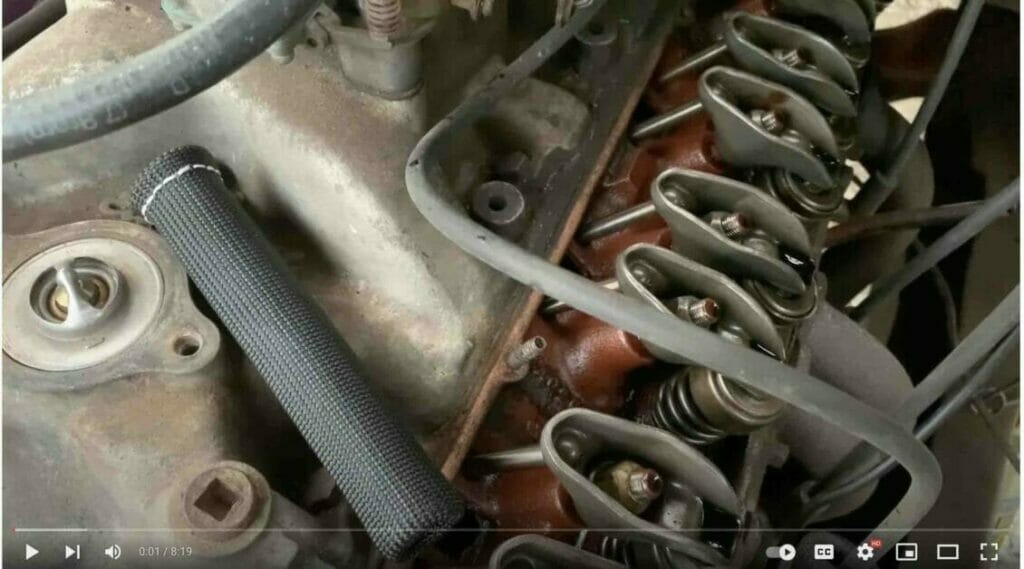How to Install Spark Plug Wire Heat Shields (DIY, Easy, Method)
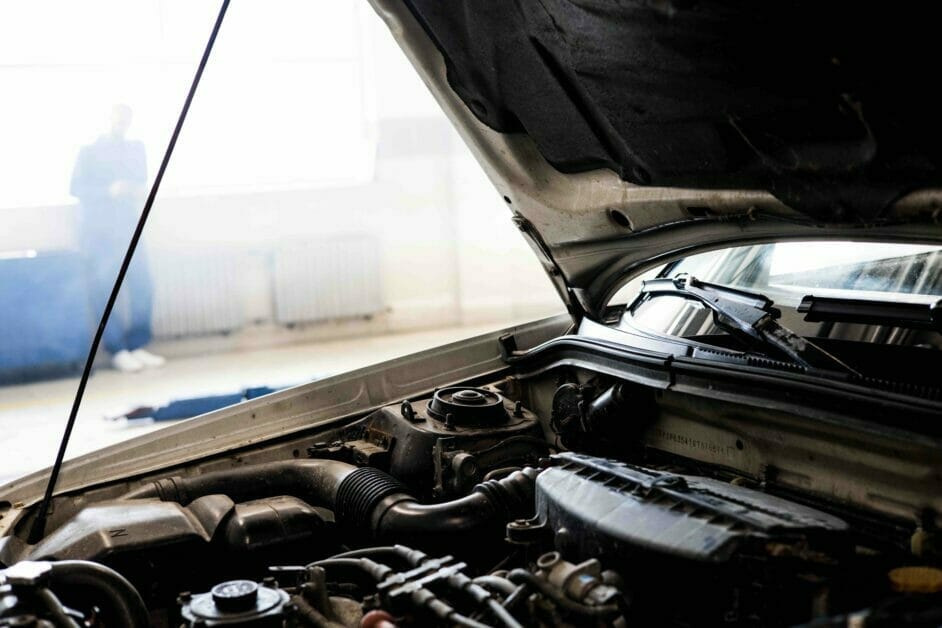
Use spark plug wire heat shields if your spark plug wires burn out frequently or melt often.
But the problem doesn’t have to be that extreme, i.e., a complete burn-through, before doing something. Heat shields also protect your spark plugs from increased resistance due to heat exposure. Your spark plugs will perform more optimally, and your ignition system will work smoother.
Quick Summary: To install a spark plug wire heat shield, unplug the first wire, slide a heat shield over it through the ring end, grab the spark plug wire boot when it comes out the other end, pull gently, and let the shield cover until the ring stops it from going any further. Then, re-insert the wire, and repeat the process for each of the other spark plug wires.
Install the spark plug wire heat shields quickly and easily by following this guide.
Spark Plug Wire Heat Shields
Heat shields for spark plug wires are made from a thermal barrier that reflects heat.
They fit between the boot’s tip and the cylinder head. They can usually withstand up to 1,200°F constantly and about 1,800-2000°F intermittently. This excessive heat comes from the engine headers close to the spark plugs when they expel exhaust gases from the cylinder.
By reflecting the heat, less will get to the spark plugs to increase their resistance. So, electrical energy will pass through easily without delay or other hindrance. Accordingly, the spark plugs will get the full electrical energy they need to perform optimally, and your ignition system will work more smoothly.
So, you don’t have to be a truck or race car driver to benefit from these heat shields.
Heat Shields and their Alternatives
Heat shields are similar to boot protectors, boot sleeves, plastic caps, fiberglass socks, and zip ties in function, but they also differ.
All of them are designed to protect spark plug wires from the engine headers. But heat shields are made of materials such as fiberglass, titanium, and basalt, which are higher quality and more heat resistant. Their braided design also helps to dissipate heat more efficiently.

Now, let’s turn to installing them.
Installing Spark Plug Wire Heat Shields
Things to Ensure Before Installation
Ensure the following before installing the spark plug wire heat shields:
- You buy enough heat shields because you need as many as the number of spark plugs. All the spark plugs should have heat shields over them together.
- You only install the spark plug wire heat shields when the engine is cool. They are very hot while the engine runs and can remain hot after turning it off.
- Identify where each spark plug is wired. You must maintain the same firing order.
Proceed as follows when equipped with the right number of heat shields and the engine is cool:
Step 1: Unplug the Wires
Unplug the spark plug wires only while they are cool. I suggest you do this one by one.
Start by grabbing the head of the first spark plug boot and gently pull it off.
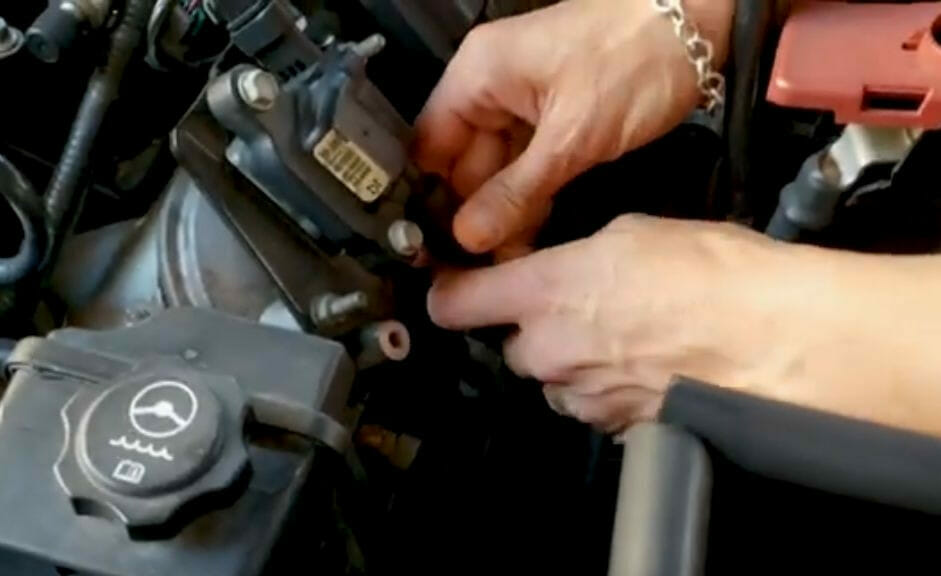
Then, do the same at the other end by pulling gently.
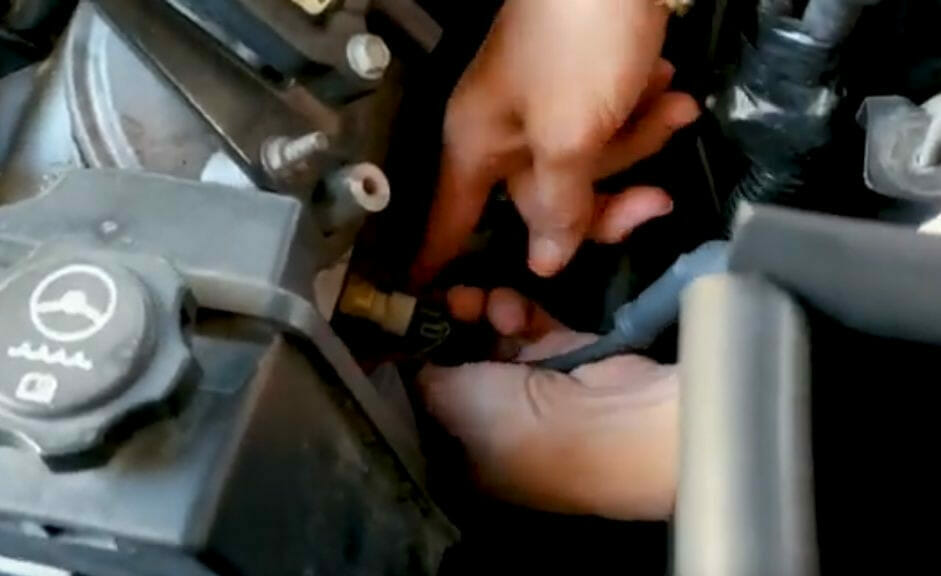
They should come off easily.
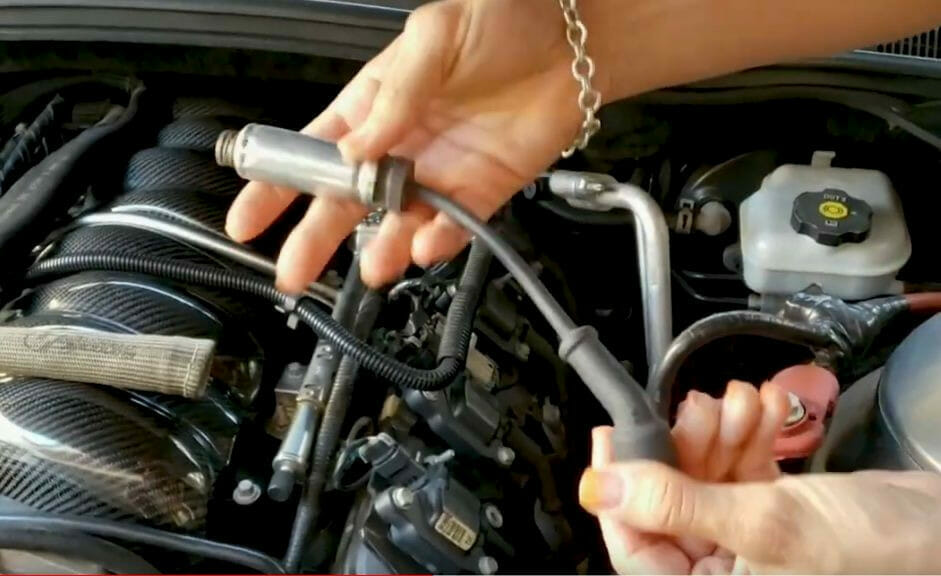
Step 2: Slide the Heat Shields
Installing spark plug heat wires is very easy.
Simply slide them over the spark plugs into place. Notice the ring inside one end of the heat shield.
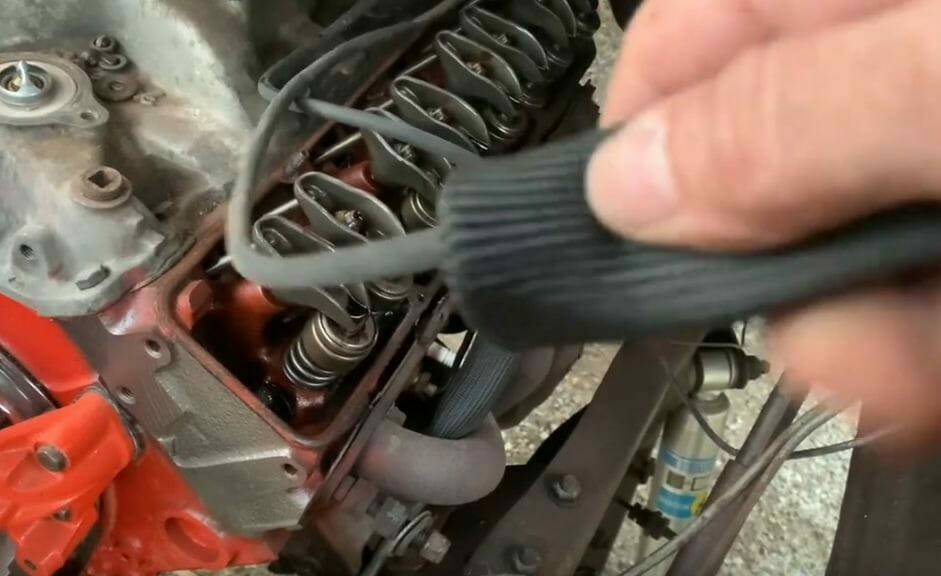
Insert the spark plug wire’s boot through the side with a solid ring on it.
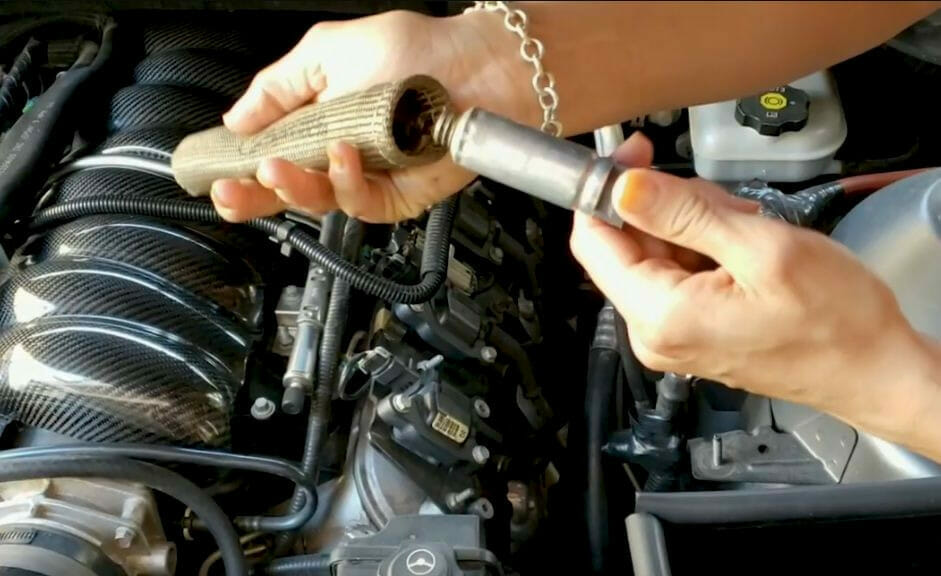
The ring or lip on the edge of each heat shield will keep the shields firmly in place and prevent it from going any further. So, you should not need to push the shield. It’s meant to be left against the ring.
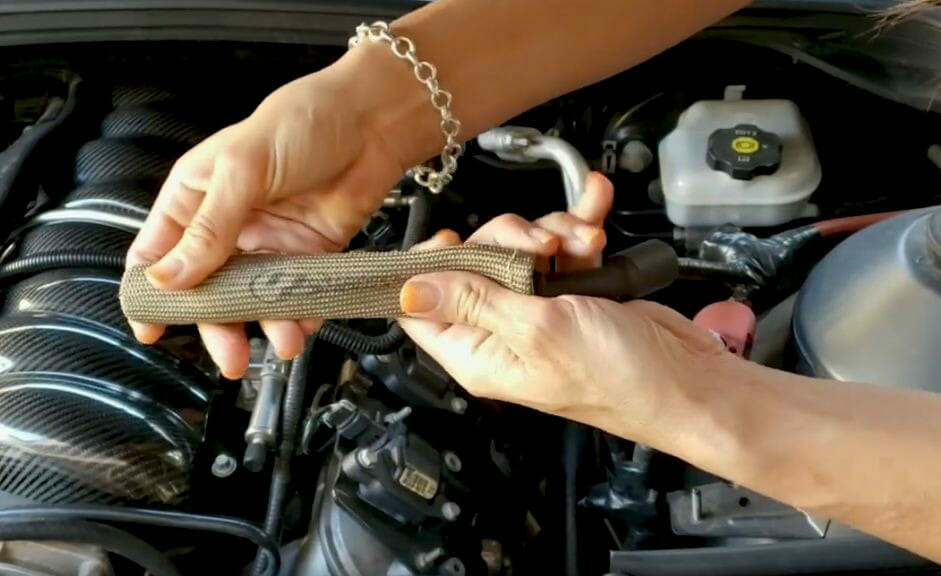
Pull from the other end of the heat shield when the spark plug wire boot appears if that helps.
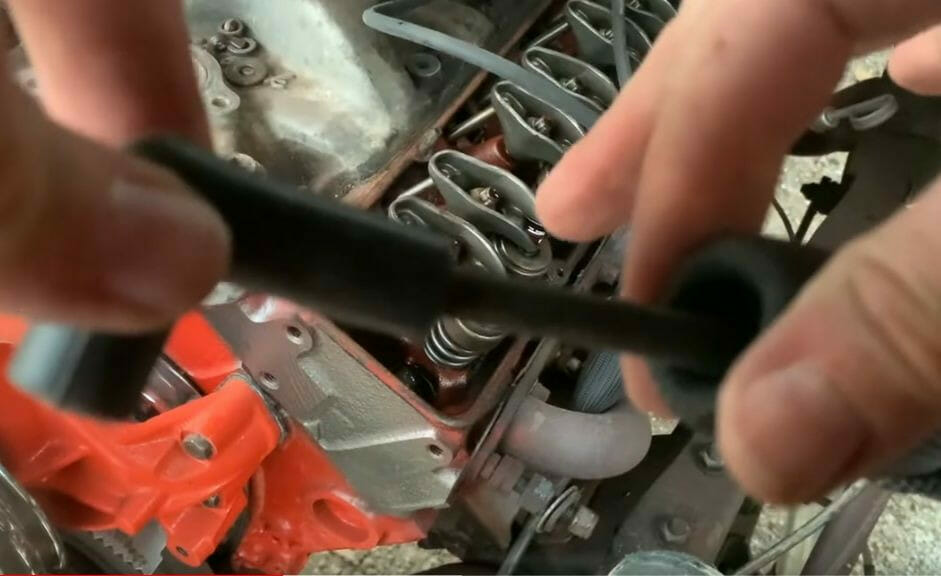
Step 3: Re-insert the Wires
You must re-insert the spark plug wires in the same position to maintain the same firing order.
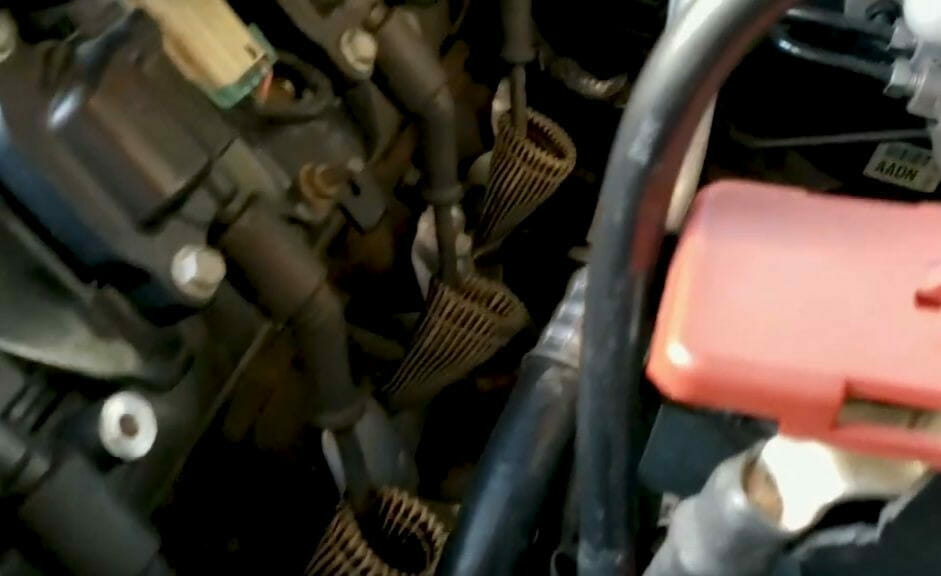
Using Dielectric Grease
If re-inserting the spark plug wires becomes more difficult afterward, use dielectric grease to help them slide in smoothly.
But ONLY apply a little to the inside of the spark plug boots, not on their ends or the connectors. That’s because dielectric grease is an insulator, so you don’t want to reduce the conductivity where you need it.
So, apply only a thin coat on the inside of the boots in a circular motion while carefully avoiding the terminals inside them.
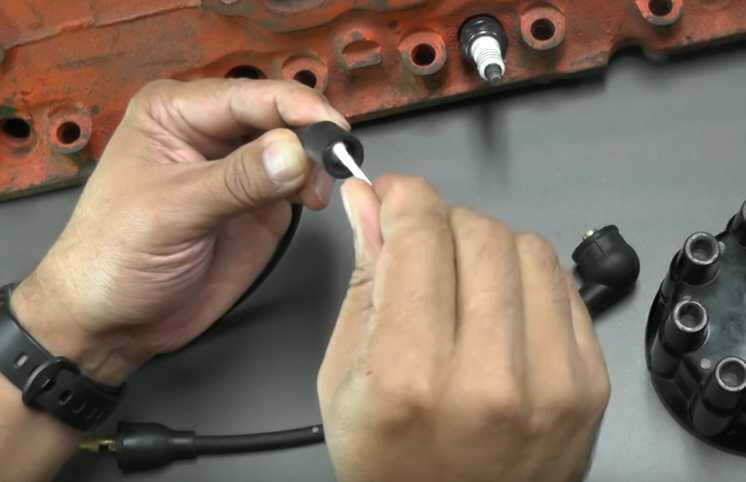
You can also apply some dielectric grease to the ceramic portion of the spark plug itself if necessary. Again, take care not to get any of it on the electrical terminal on the tip.
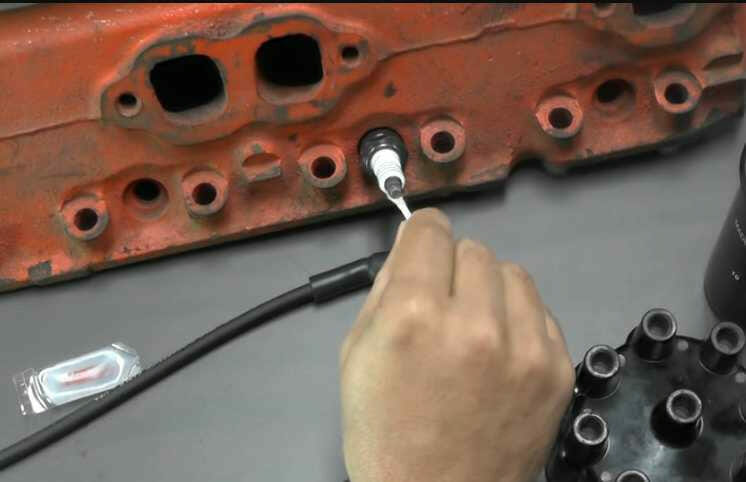
Frequently Asked Questions (FAQs) about Spark Plug Wire Heat Shields
1. What is the primary purpose of a spark plug wire heat shield?
- The main purpose of the spark plug wire heat shield is to protect the spark plug wires from melting, burning out, or increasing their resistance due to heat exposure.
2. How often should I check my heat shields?
- Inspecting your heat shields during regular vehicle maintenance or whenever you service or replace your spark plugs is advisable. Look for signs of wear, tear, or damage.
3. Can I install heat shields on any vehicle?
- Yes, spark plug wire heat shields are versatile and can be installed on most vehicles. However, always check the manufacturer’s specifications to ensure compatibility with your vehicle model.
4. What are the signs of a failing spark plug wire?
- Common signs include engine misfiring, reduced fuel efficiency, engine hesitation during acceleration, and engine surging. If you notice any of these symptoms, it might be time to inspect both your spark plugs and their wires.
5. Do spark plug wire heat shields affect vehicle performance?
- Yes, in a positive way! By protecting the spark plug wires from excessive heat, the shields ensure the optimal performance of your spark plugs, leading to smoother ignition and better fuel efficiency.
6. Are there different types of heat shields?
- Various types are made from different materials, such as fiberglass, titanium, and basalt. Each type offers varying levels of heat resistance.
7. How long do spark plug wire heat shields last?
- The lifespan of a heat shield largely depends on the material it’s made from and the conditions it’s exposed to. However, with proper maintenance, they can last as long as your spark plug wires.
8. Can I install the heat shields or should I consult a professional?
- While the installation process is straightforward, and many vehicle owners can do it themselves, it’s always a good idea to consult a professional or mechanic if you’re unsure or unfamiliar with vehicle mechanics.
9. How do I know if my heat shields are working effectively?
- If your spark plug wires are not showing signs of damage or wear due to heat, and your vehicle’s performance is optimal, the heat shields are likely doing their job effectively.
10. Are there any downsides to using spark plug wire heat shields?
- Generally, there are no significant downsides. However, it’s crucial to ensure proper installation to avoid potential issues. Improper installation could lead to ineffective heat shielding or even damage to the spark plug wires.
References
Spark plug wire heat shields. https://www.amazon.com/JDMSPEED-Black-Shield-Protector-Sleeve/dp/B01HMAGPMW
Video References:
Heatshield Products Inc
Lectric Limited
Swamp Donkey Motor Sports
